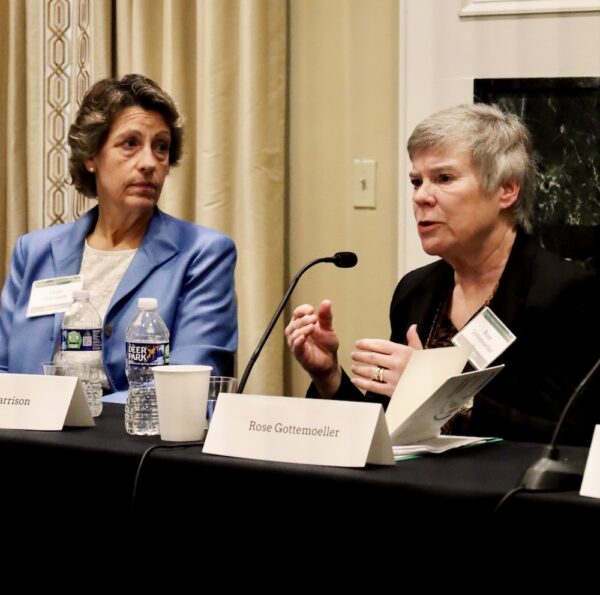The Possible Path Forward: How Conflict Informs International Alliance Structure
By Ryleigh Line ’24
This post features a student’s reflections on “The Past, Present, and Future of U.S. Alliances,” a conference recently hosted by GRI’s Security & Foreign Policy Initiative. Student attendees had the chance to share personal insights, interpretations, and potential paths forward in these reflections. Any views expressed pertain to the authors themselves and not to the Global Research Institute.
Despite not currently being enrolled at William & Mary, I was grateful for the opportunity to attend the Global Research Institute’s conference, titled the Past, Present, and Future of U.S. Alliances. I was able to attend this conference because I am temporarily on campus as I’m preparing to depart for my semester-long study abroad in Kyoto, Japan. The timing of the conference couldn’t have been better. Hearing from qualified policymakers, diplomats, government officials, professors, and scholars regarding U.S. foreign policy has added dimension to how I’m conceptualizing my experience abroad. This conference offered me the unique opportunity to hear experts address each other in an open forum, crossing disciplines, perspectives, and issue areas to paint a compelling portrait of current thought on U.S. alliances. As a current junior majoring in International Relations and Japanese Studies, I am still exploring the intersection of my majors, and the panels I attended informed how I’m looking toward the future of U.S./Japanese relations.
During the panels, I found myself furiously scribbling notes (in my new GRI notebook!), listening as panelists agreed, disagreed, and laughed at niche IR jokes. After the conference, I took the time to personally process the assertions made by panelists and audience members alike. One particular concept kept returning to me in light of the war in Ukraine: the touchstone idea that international alliances are stabilized by conflict. This theory informed the arguments of speakers across panels and was discussed in relation to several alliances in varying geographic regions.

Over the two day conference, experts addressed topics such as the strategic future of U.S. alliances in the Asia-Pacific, the evolution of military assistance, and more.
In the panel “Perspectives on the Future of U.S. Alliance Strategy,” Josh Shifrinson, Associate Professor of International Relations with the University of Maryland’s School of Public Policy, went as far as to assert that alliances don’t rest on the basis of common values, but rather on perceived common threats. The reason I found this concept thought-provoking was not because I doubted its legitimacy; it makes sense that the United States, as a global leader in defense spending, would prioritize alliances based on threat deterrence or response. Rather, it was the ease with which the panelists and the audience, including myself, accepted the necessity of practically constant conflict to maintain a stable world order that has left me uneasy. This concept of a symbiotic relationship between conflict and alliance stability is not unique to the proceedings of this conference and has in fact echoed throughout most of the IR courses I’ve taken at William & Mary. When war is perceived as stabilizing, what does that do to inform U.S. foreign policy? Of the 247 years of modern U.S. history, this country has been at war somewhere in the world for 232. This constant state of conflict begs the question: where does the U.S. stand within the global system when it is not directly or indirectly at war?
Thus, I find myself pondering a few broad questions in the wake of the conference. Firstly, are alliances forged on a foundation of peace possible? And secondly, if they are, what would they look like? What other common interests might exist that could be as stabilizing and unifying as a common enemy? Many panelists suggested that the U.S. should soon be turning its gaze toward China, and that global trade may be an area ripe for collaboration. Could we potentially see, then, alliances being built around trade wars in lieu of physical wars? As scholars and professionals in the field of IR, we should not take theories based in perpetuating violence as immutable. Rather, we should hold the future carefully in our hands, and use the theories we have developed as tools to form that future into something promising.




No comments.
Comments are currently closed. Comments are closed on all posts older than one year, and for those in our archive.